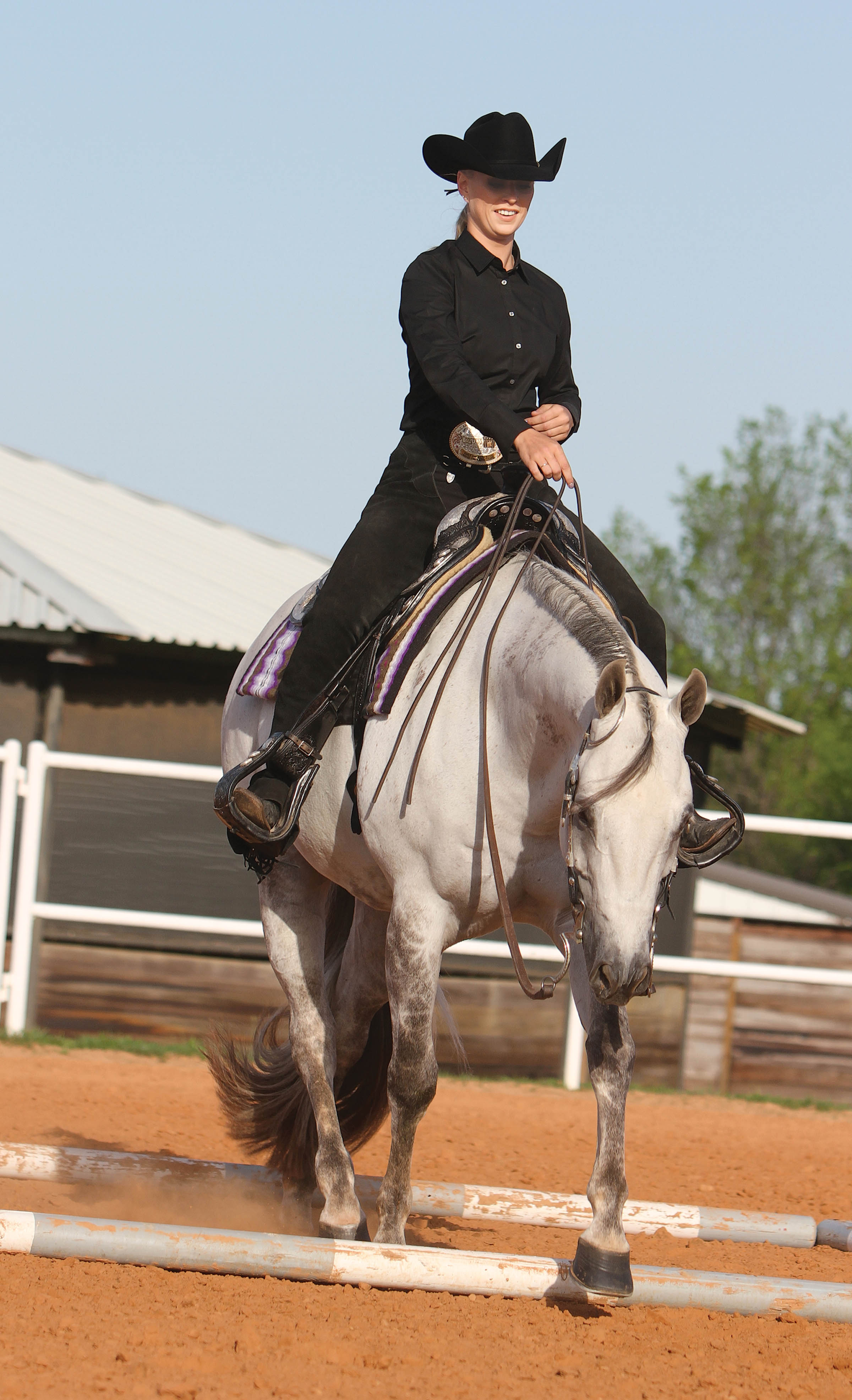
Pole practice is obviously required for horses competing in trail classes and ranch riding, but it also encourages your horse to lift his back and travel with cadence and impulsion (i.e., collection) to avoid hitting poles. Any horse can benefit from being better collected under saddle, so don’t hesitate to try the exercise even if judged trail isn’t your focus.
Set up four 12-foot poles in a square in your riding arena. (You can buy garden timbers at a garden-supply store if you don’t have any at home.) You’ll travel over the square in a four-leaf-clover pattern. Outfit your horse in a bit he responds to, and ride with one or two hands on the reins. Two-handed riding helps when you’re starting out, then you can progress to one-handed riding when your horse’s guide improves. This example is shown at a working jog, but you can advance to a lope once you and your horse master it at a jog.
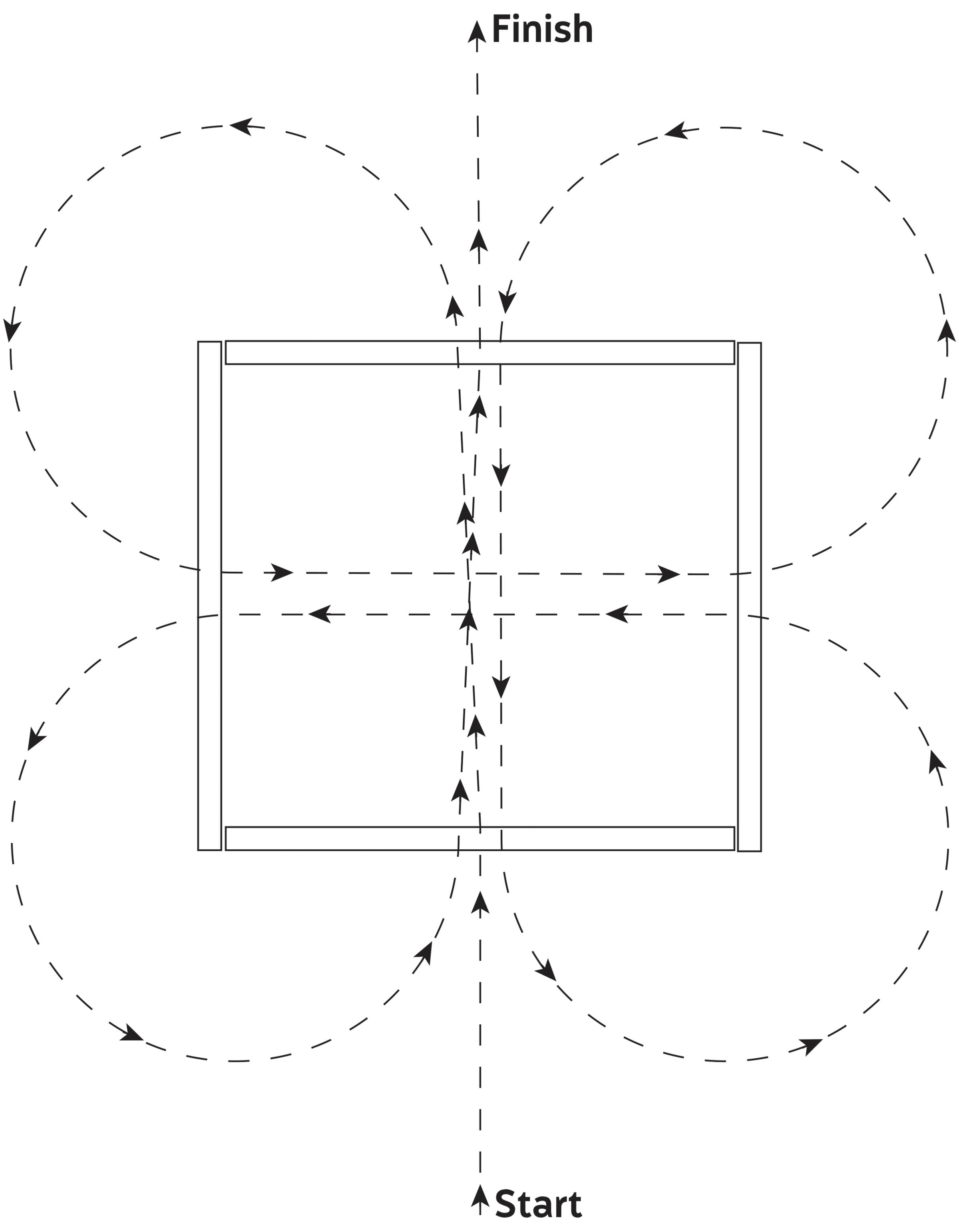
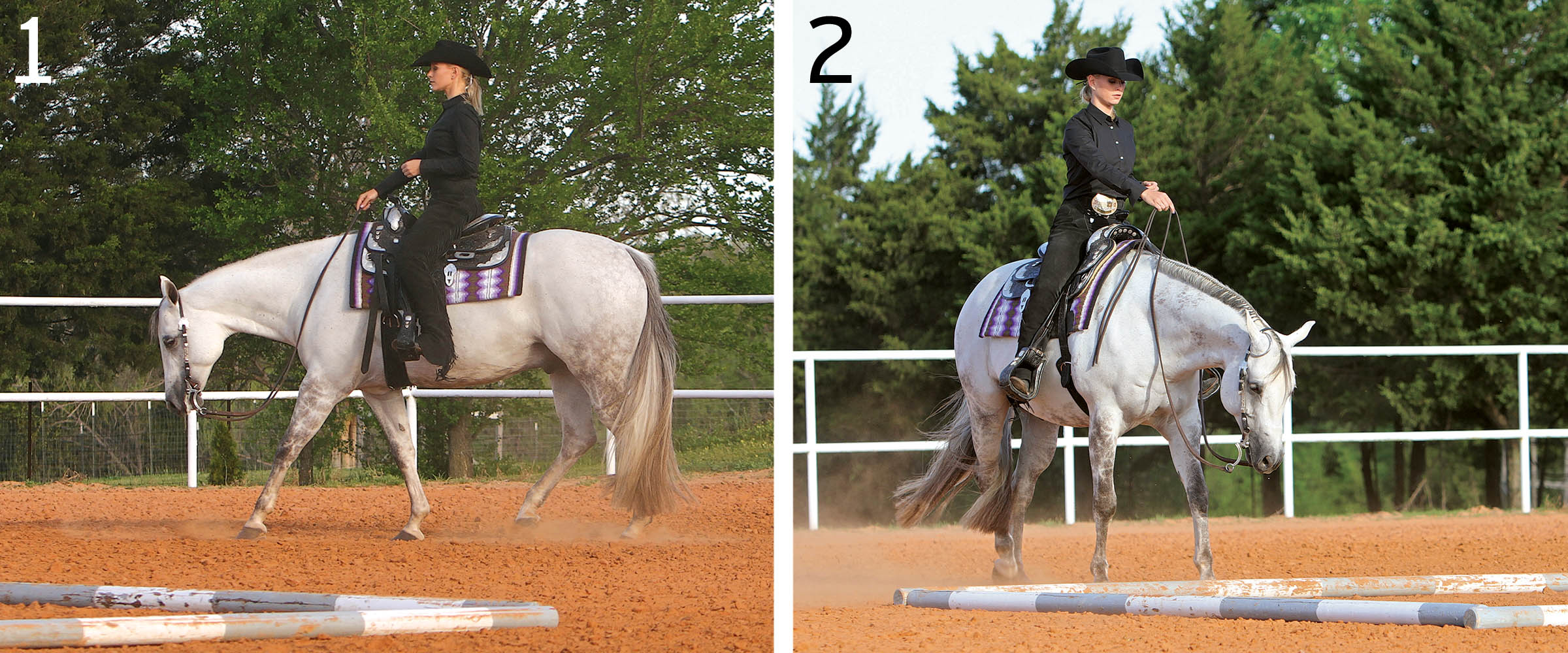
1 Begin by jogging around the box you made with the poles. Work at a forward, rhythmic jog to encourage cadence and self-carriage. This circle around the box is “neutral.” Anytime your horse loses collection or gets frustrated, return to circling around the box until his mind is focused and his body is in position to work over the poles. In this example, the rider circles to the left around the box, and she’ll make left turns every time she exits the box. Be sure to work to the right, too, so you can avoid one-sidedness in your horse. We do find it important to work in one direction all the way through the drill before working the other direction. Once your horse is handy with it, you can change directions as you go along to keep his interest and test his collection.
2 Plan your entry into the box so that you approach the first pole with your horse straight and in the middle of the pole. Successful overall execution comes from the approach more than anywhere else in the exercise. The same applies when you’re working an obstacle in a trail class. If you’re straight going in, you’ll be straight coming out the other side. As you approach the first pole, look 4 inches on the other side of the pole, inside the box. If you look directly at the pole, that’s where your horse’s foot will land—and he’ll hit the pole.
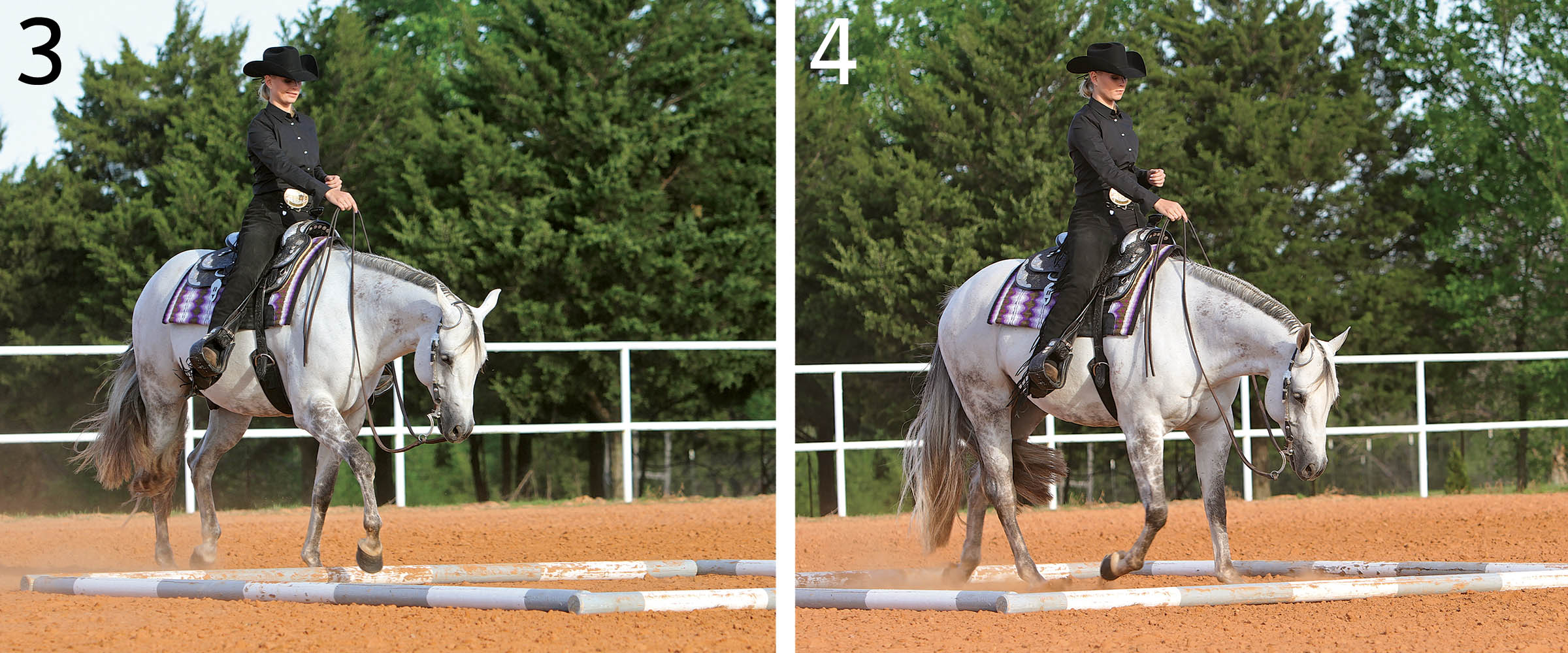
3 Ideally, your horse’s first step over the pole (his right foot in this photo) lands the same distance in front of the pole as that foot was away from the pole before he made the step. Your horse’s impulsion and cadence are key as he makes his first step into the box. Drive him forward with your legs and seat; don’t let him get lazy as he enters the box.
4 When trotting through this box, your horse should take four steps between the two poles, inside the box (two if loping). Use your legs to drive him forward and keep him straight as he travels to the second pole. Don’t allow yourself or your horse to anticipate the left turn that comes after you cross the pole. Again, look 4 inches beyond the pole to drive your horse’s first step over without hitting a pole.
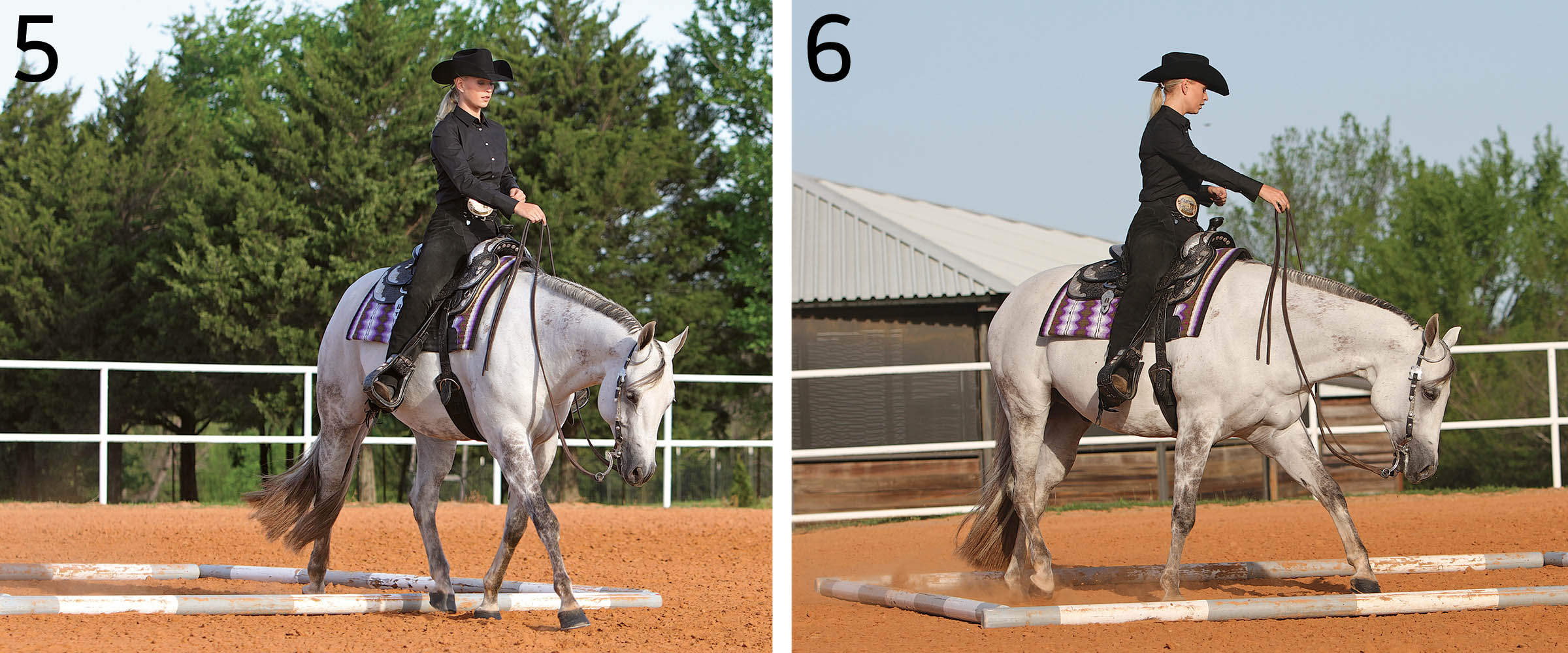
5 You can see how this exercise rounds your horse’s back. Keep driving forward and straight at this point. If your horse dives left or right or loses cadence, he’ll hit the pole with his last foot. A straight exit from this obstacle sets up a precise approach to the next one when completing a trail course, so it’s good practice at home. Once your horse clears the pole, trot forward two strides, then turn to the left to make the first “leaf” in the clover pattern, and approach the box from the second side. Be sure to achieve that same straightness and cadence when you ride up to the pole. If your horse leans, ducks, or loses collection, go back to “neutral” and circle the box until he’s back on track. Then try again. Repeat these steps to complete each of the clover’s leaves, and exit on a straight path when complete.
6 Challenge exercise: Start in neutral to achieve cadence and collection, then enter the box closer to one of the sides (instead of centered) to trot a circle inside the box. It gives you a feel for your horse’s stride so you can tell when you need to push him to step a little farther or scale back his stride to cover less ground. n
Will and Elizabeth Knabenshue, Whitesboro, Texas, grew up showing horses on opposite coasts—Will in Virginia and Elizabeth in California. The two now train all-around horses and coach amateur and youth riders. Will is an AQHA and NSBA judge. Elizabeth is an AQHA World Champion and multiple All American Quarter Horse Congress champion. The couple has trained and coached numerous amateur and youth world champions.






